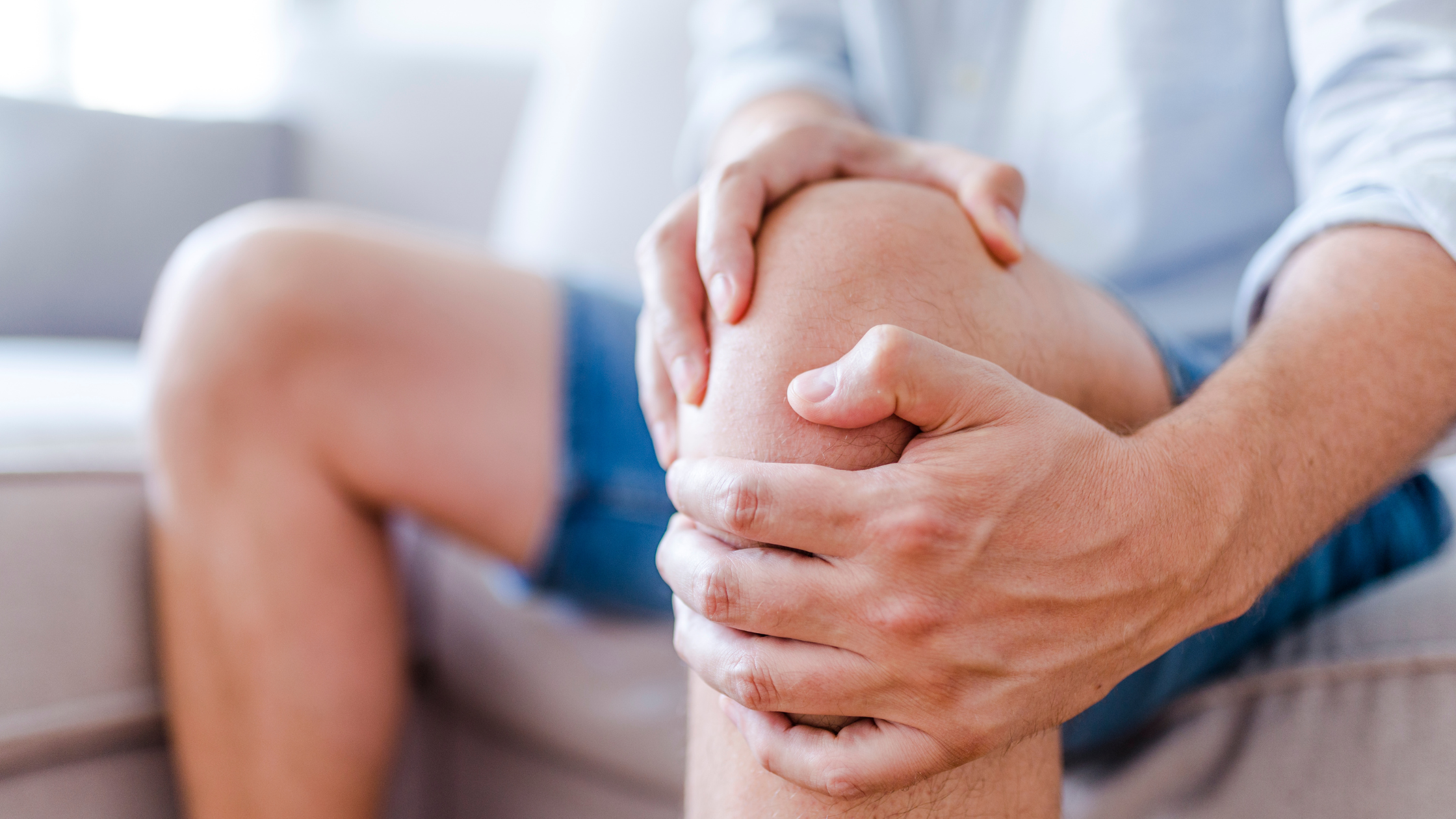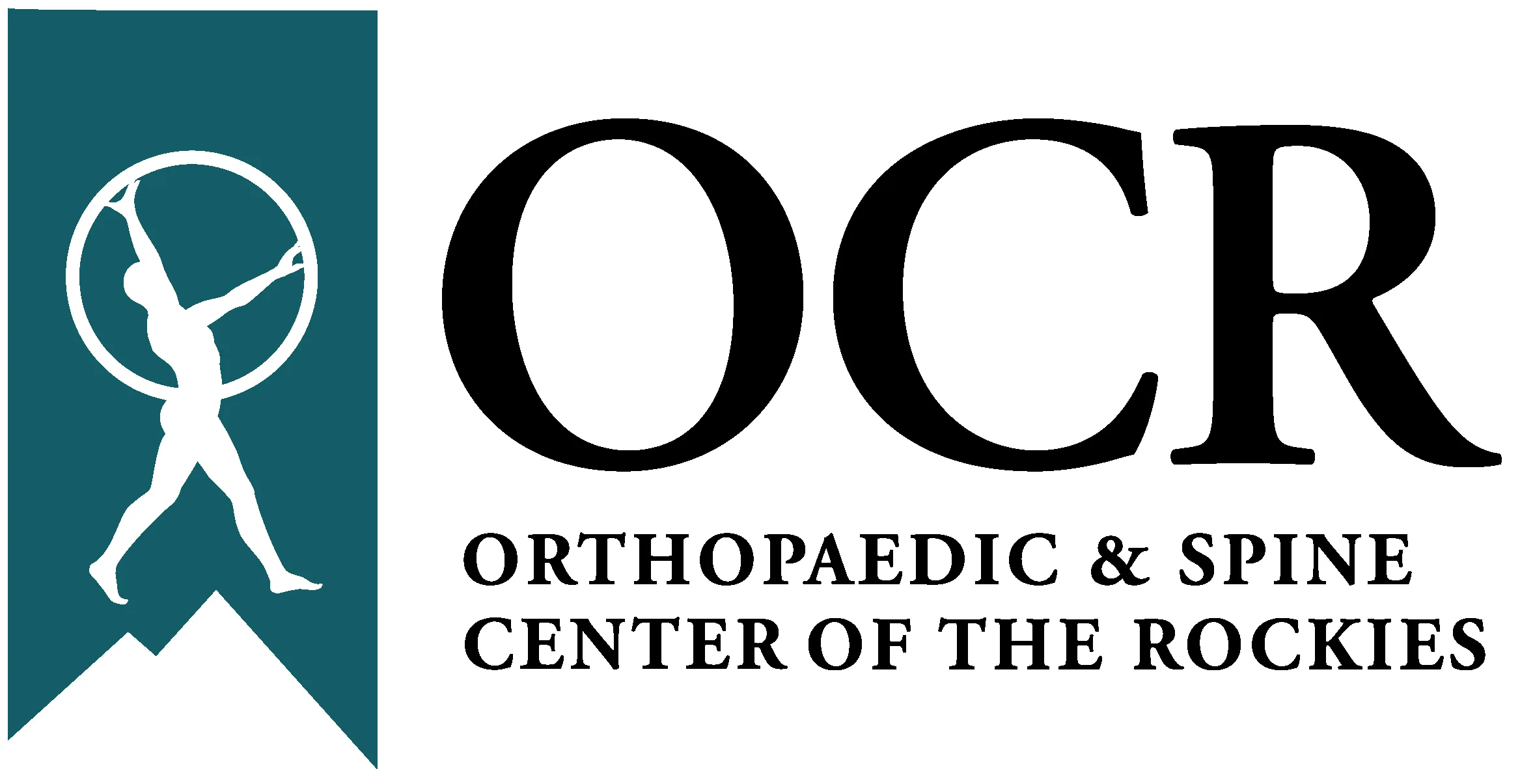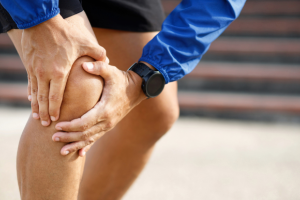“Head, shoulders, oh… my knees are aching!” This song should be sung without interruption. Unfortunately, knee pain is all too common. The knee is one of our bodies’ most complex joints and is involved in nearly all of our daily activities. From walking and running to lifting and jumping, with so much action, it’s no wonder knee pain should arise for so many of us.
At the Orthopaedic Center of the Rockies, we want your body to work as it should and that means alleviating your knee pain. If you’re finding yourself frequently complaining, “my knees are aching,” we want to help you get to the bottom of it and to know if your knee pain is serious or not. Below we will briefly discuss the anatomy of the complex knee joint, dig into some common causes of knee pain, and talk about the causes of knee pain that might be the most serious.
What Makes the Knee So Complex?
The knee joint exists at the intersection of the femur, the patella, the tibia, and the fibula and is actually made up of two parts. (ProfessorAdrianWilson) Between the end of the femur and the top of the tibia exists the tibiofemoral joint, and where the femur and the patella meet exists the patellofemoral joint. These joints are surrounded by synovial fluid, which helps keep all the parts moving nicely.
As we push into the earth, these bones are naturally inclined to compress into one another. To protect them from this pressure, each of the bones is capped with a layer of cartilage that acts as a shock absorber and helps to prevent friction between the bones. As an added protection, there are two menisci between your femur and tibia. To keep these bones from sliding out of place, the knee joint is equipped with muscles, tendons, and ligaments.
- Your knee employs two sets of ligaments. Ligaments are made of tough tissue that does the hard work of holding our bones together. At the center of the knee joint are found the cruciate ligaments. These two small ligaments control the forward and backward movement of the knee. On the outside and inside of the knee rest the collateral ligaments. They connect the femur to the tibia and the fibula, control sideways movement, and brace the knee against any unnatural movements.
- Your knee is employed by two major muscles. The quadriceps, a group of four powerful muscles, sit atop the femur and are responsible for straightening your leg. The hamstrings are on the back side of your femur and take care of bending your leg. Without the knee joint, there would be no bending or straightening.
- Your knee’s muscles attach themselves to the bones of the knee using three different groups of tendons. Crossing on the backside of the knee are three hamstring tendons. These tendons attach the hamstring to the tibia and the fibula. The four quadricep muscles share one tendon that attaches to the patella. Lastly, the patellar tendon, also known as the patellar ligament, attaches the patella to the top of the tibia.
Top 5 Most Common Causes of Knee Pain
With all those moving parts, it’s no wonder why our knees are notoriously leaving us in pain. By defining the cause of your knee pain, you have a better chance of speeding up your recovery and preventing future injury.
Below is a list of five very common causes to help you narrow down your specific cause of pain. Keep in mind that this is not an exhaustive list and that you should always consult your doctor if you are experiencing pain!
1. Bursitis
If you are constantly bending or kneeling, or if you have been prone to falls, you could have irritated the bursa (the sac that holds a small amount of fluid under your skin and above your joint) on top of your kneecap. Irritation of this can cause pain and swelling as the bursa is not as easily able to prevent friction from happening when your joints move.
2. Fractures
A very common cause of knee pain is a fracture. A fracture is a break or a crack in one or more bones in the knee joint. The trauma from this can cause pain, swelling, bruising, or tenderness.
3. Dislocated Kneecap
If your kneecap has slid out of place, often due to a fall or slip, then you could be experiencing pain, swelling or bruising from a dislocated kneecap. Your kneecap normally sits over the front of your knee, and it glides over a groove in the joint when you bend or straighten your leg. When the kneecap dislocates, it comes out of this groove and the supporting tissues can be stretched or torn causing pain.
4. Meniscal Tear
A meniscus tear occurs in the knee cartilage that cushions your shinbone from your thigh bone. A torn meniscus occurs because of trauma caused by forceful twisting or hyper-flexing of the knee joint. This pain worsens with twisting or squatting motions.
5. Osteoarthritis
The top cause of knee pain after the age of 50 is osteoarthritis. Most adults notice pain when they are active or they experience pain early in the morning from osteoarthritis. This can cause pain, stiffness, and swelling. This is occurring because the protective cartilage that cushions the ends of your bones has worn down over time.

When Your Knee Pain Might be Serious: Acute vs Chronic
When something isn’t right with our bodies, we often feel pain telling us that something is wrong. The reason for the pain can sometimes be obvious, such as breaking a bone or a muscle strain. Other times, however, we might feel pain that doesn’t have an obvious source or that we aren’t sure where it came from, but has been there for months on end.
Knowing the difference between these two types of pain can help you understand your treatment options. Check out our blog, Chronic Pain vs. Acute Pain in Orthopedic Conditions, for more information.
Before we part, let’s address in further detail some of the causes of knee pain we’ve found to be the most painful.
A Torn Meniscus
The meniscus is the little shock absorber we mentioned earlier – there are two in each knee. A tear to it is by far the most common athletic injury. It’s typically caused as a result of aggressive twisting or a direct blow to the knee. Chances are you’ll feel a popping sensation at the time of injury. Symptoms of this injury include swelling and stiffness and can leave you feeling like your knee might give way or that it’s locked in place.
Depending on the location of the tear, your meniscus may heal on its own. You’ll know when this source of knee pain is serious when the pain is persistent and severe, and if it’s swollen to the point where you’re no longer able to move it. The best course of action is to contact your doctor when you notice the pain and allow them to examine your knee.
An ACL Tear
The ACL is one of the ligaments holding your bones together at the intersection of the knee. Slightly less common than a meniscus injury, it can occur from similar activities including a direct blow to the side of the knee, turning aggressively, planting your foot in the ground to change direction, or hyper-extending your knee.
When this injury occurs, most report hearing a loud popping sound followed by an inability to bear weight. Unlike the meniscus, this injury is nearly always serious and cannot heal on its own regardless of the severity of the tear. This is because there is no blood supply to this ligament. A full recovery will require surgery, but you can move forward with limited mobility by electing for physical therapy for minor tears instead.
Osteoarthritis of the Knee
Unlike the two causes of knee pain listed above, osteoarthritis is not an injury, but a disease. By nature, osteoarthritis occurs when the cartilage at the ends of your bones wears down leaving bones rubbing against bones. This results in pain and stiffness due to swelling of the joint and can lead to extra bone growth in the affected joint.
The cause of osteoarthritis is largely unknown, though some cases are found to be caused by disease. This condition is without a cure, though there are many strategies for treating the accompanying symptoms. While symptoms of osteoarthritis often come and go, you’ll want to contact your doctor if the pain is continuous.
Treatment for Aching Knee Pain at OCR
Treatments for knee pain include in-home remedies, physical therapy, and medical intervention like surgery. The most effective first step for addressing aching knees is to schedule an appointment with your physician. Your doctor will be able to examine your knee – checking for swelling and assessing mobility – and ultimately prescribe the best treatment for your knee pain.
Whether you’ve injured your knee in sports, in a recreational activity, suffered an accident, or have an arthritis-related condition, our knee experts can sort it out. Don’t live wondering whether your knee pain is serious or not, schedule an appointment today, and let’s get to the bottom of it.


